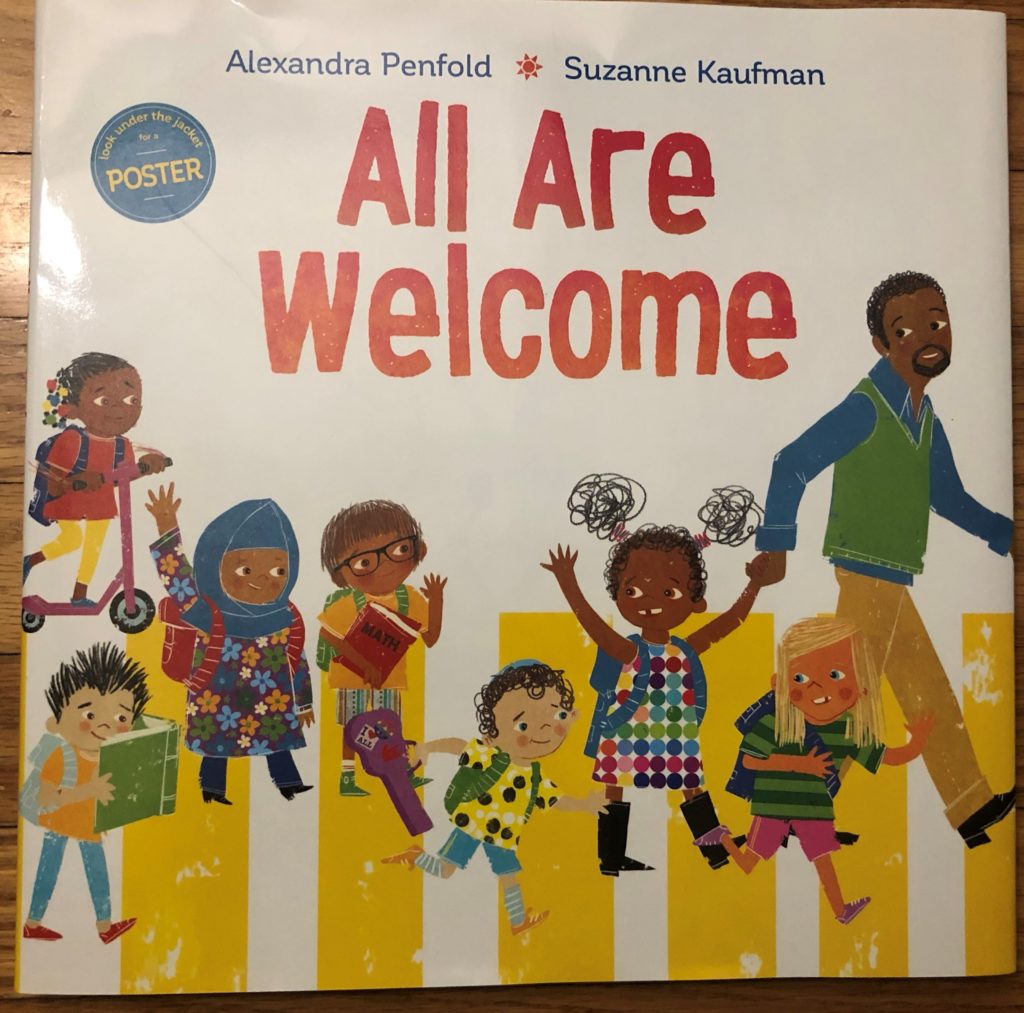By: Amelia Schrader
Senior Manager of Learning and Education
Materials:
All Are Welcome Book (or read-a-loud )
Paper (or downloadable worksheet )
Pencil
Length:
Story Reading: 3 – 10 minutes
Activity: 15 minutes

Academic Subject:
English Language Arts (ELA)
Development Subject Areas:
Social – Emotional Development
Appreciating Diversity
Adaptive Social Behavior: Empathy
Diversity, inclusion and empathy are all topics we strive to teach our children. The first Play Zone in our Museum, Being Good Neighbors, is all about teaching these important lessons to our visitors. We know that these important life lessons can often be challenging to discuss on an age appropriate level. Our Being Good Neighbors Zone is designed to get visitors to learn more about the diverse backgrounds of all people that make up our wonderful community through play.
While we know you cannot visit the Museum right now, this at home lesson, targeted at kids PreK-2nd Grade will help children learn to empathize with a child or community member that maybe feeling exclude for one reason or another. Combining this lesson with a beautifully illustrated children’s book is a great way to start the conversation!
Directions:
Step 1: Read the story, All Are Welcome by Alexandra Penfold and Suzanne Kaufman. If you do not have this story you can watch a read-a-loud video here.
Step 2: Discuss some of the images in the story. You can use some of the following questions to prompt discussion:
· Do you have a friend at school who is from a different country?
· Do you have a friend at school who speaks a different language at home other than English?
· Is there anyone in the cafeteria that always brings a lunch to school that is different from yours?
· Do you have a friend at school who moves different from you? Maybe they use a wheeled mobility device, crutches or a walking brace.
· What are some of the things that are the same between you and your friends? Do you all like the same games? Do you have some of the same types of pets?
Step 3: Talk about what it means to include someone vs. excluding someone. Complete the chart pictured below to discuss how it feels, looks and sounds to include someone vs excluding that person.
Vocabulary Words
· Include/Inclusion: To make someone part of a group, place or activity
· Exclude/Exclusion: To deny someone access to or from a group, place or activity.
· Diversity: The differences between people. These can include cultural background, age, appearance, religion, ability level etc.
· Similarity: The qualities that make people alike
· Empathy: The ability to be aware of and understand another persons feelings, thoughts or experiences.
Want another story? Check out our Storytime page for more stories!
